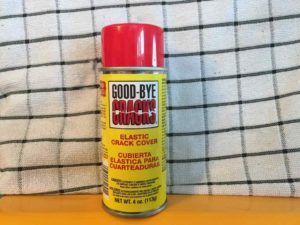Fixing cracks is something we run into on almost every job. They are very common and not usually a sign of a bigger problem. So how do you know if it is a sign of a bigger problem?
Your floor is basically a bridge system running from load bearing wall to load bearing wall. When a foundation shifts it will cause an upper floor and load bearing wall to shift with it. Signs of this happening are cracks on the exterior of your home on the foundation, windows and doors that don’t close properly and cracks on the walls on the interior of your home.
If you only have cracks on the interior of your home and not any of the other signs of a shifting foundation, then you are most likely fine. If in doubt there are plenty of companies that will look at your home. Normally for free.
The most common area we see interior wall cracks are at the top left or top right of a door frame. Usually running from the miter joint of the door casing and running up towards the ceiling. This is usually from the framing header over the doorway moving separate from the horizontal wall framing.
If the shifting of the header is significant this problem will continue until the framing is reinforced. In most cases this is not necessary.
First step is to protect the floor below the area to be repaired. It can get messy. Let’s assume you are fixing a drywall crack and not plaster although the process is similar. You want to cut along the crack, running a razor knife in the crack and create more of a V shape in the opening. Use a clean brush and clean the debris out of the cut area. Using a smaller drywall knife, press drywall mud into the crack and run a small and thin path of drywall mud on top of the crack area. For most cracks you want about a three to four inch wide path of mud.
You can use either the traditional paper drywall tape or the mesh varieties. I prefer the paper tape because it is often easier to finish. A trick I use is I will wet the paper tape before applying it to the area to be patched. Once the paper tape is embedded in the drywall mud you will want to smooth it out to ensure there are no air bubbles. Put a thin coat of drywall mud over this.
Once this area is dry you will sand it and apply additional coats of mud. Usually one more coat but sometimes two. Then you simply prime this area and paint.
If you are repairing an area that has been repaired before, a persistent crack, then an additional step you can take is to apply a couple coats of an elastomeric coating over the primed area before applying the finish coat. One product that works well is Good-Bye Cracks. This stuff basically creates a elastic film that rides over a crack should it reoccur.



